
Manufacturer's Specifications:
Frequency Response: 2 Hz to 20 kHz, ±0.3 dB.
THD: 0.003% at 1 kHz.
Dynamic Range: 96 dB.
S/N Ratio: 96 dB.
Number of Programmable Selections: 20.
Channel Separation: 94 dB at 1 kHz.
Line Output Level: 2.0 V.
Power Requirements: 120 V. 60 Hz, 30 watts.
Dimensions: 12.6 in. W x 3.54 in. H x 11.8 in. D (32 cm x 9 cm x 30 cm).
Weight: 15.4 lbs. (7 kg).
Price: $749.
Company Address: 5985 Atlantic Dr., Unit 6, Mississauga, Ont., Canada L4W 1S4.
Mission Electronics Ltd. is a British firm whose audio components have earned a fine reputation throughout Europe and North America. The company's products are distributed here by Mission Electronics, based in Ontario.
From the outset, it was clear to me that at least the mechanism of the Mission DAD-7000R was produced by Philips, co-developer of the Compact Disc. What made it clear was the inclusion of a bulletin for U.S. purchasers that listed the service centers of NAP Consumer Electronics. (NAP, in case you hadn't guessed, stands for North American Philips.)
While the major internal assemblies may have their origin with Philips, the external layout and, in fact, the audio-output stages of the DAD-7000R are entirely of Mission's own magnificent conception and design. With as sparse a control layout as I have seen on any full-function CD player, Mission has managed to provide just about every programming and music-accessing feature that you would want.
Furthermore, the wireless remote control supplied with the DAD-7000R is equally unencumbered by needless buttons and switches, managing nonetheless to duplicate every function of the few front-panel controls. Of course, the simplified front panel and the ease of operation did require omitting some less often-used frills and features found on other machines.
Specifically, this player can be programmed to randomly access and play up to 20 tracks. It can repeat-play an entire disc, a specific track, or a previously programmed group of tracks. You can review your programmed selections, and you can fast-search at three progressively increasing speeds, albeit without an audible cue. You can access any track manually, but there is no provision for accessing index points within a track. When a disc is first loaded, the display shows the number of tracks and total playing time until you initiate play or programming. During play, only the track number and elapsed time within that track are indicated by the display.
Control Layout
The left half of the Mission DAD-7000R is occupied by the very solid and sturdy disc drawer, which, when activated, moves slowly but with a solidity that is in marked contrast to the flimsy disc trays I've seen on some less costly machines. The display area to the right of the drawer, in addition to showing the track numbers and time, also indicates the tracks stored during programming and during a review of programmed steps. Two small pushbuttons below the display are used to call up previous and succeeding track numbers while programming, and a third key, centered between these two, stores the track numbers. A "Re peat" key and indicator are just below the "Store" key, and to the right is an "Error" indicator which lights up if you make mistakes while operating or programming the unit. Flanking the "Repeat" key are the "Open/Close" drawer-control and "Stop/Clear" buttons. The latter stops playback or clears the program memory.
The diamond-pattern arrangement of four keys at the right of the panel reminded me of the cursor-key layout on many personal computers. Those keys at the left and right points of the "diamond" are used for fast search or to jump ahead or back to the nearest track beginning; above them is the play key, with the pause key below. When the machine is in pause mode, an LED below the pause key illuminates.
Instead of the usual rear-panel output jacks, the DAD 7000R comes with a fixed, 36-inch twin audio-output cable which is terminated in phono-tip plugs. I can foresee problems in installations where the player is more than 3 feet from the amplifier input. Of course, audio extension cables are available, but that means two more connection junctions which, in time, can become intermittent or develop a finite resistance. The only other CD player I have run into recently that supplies such a fixed output cable is the Bang & Olufsen CD X. Is this approach peculiarly European, I wonder? Or is there some good reason why these manufacturers deny us the freedom of choosing the grade and length of connecting audio cables that we want?
Measurements
Frequency response of the Mission DAD-7000R (Fig. 1) was close to flat over the entire audio frequency range, measuring-1.4 dB at 20 kHz for the left channel and-1.5 dB at the same frequency for the right channel. This is somewhat more attenuation than is typical for most CD players, but I don't consider it a serious flaw. The slight ripple in response, noticeable particularly in the left-channel curve, is probably caused by the gently sloping analog output filters, which must be present even when digital filtering is used prior to D/A conversion. Note that the vertical scale in Fig. 1 is only 2 dB per division.
As has been true of so many CD players that use over-sampling and digital filtering, simple distortion readings can be deceptive. Careful observation and interpretation of the output components of the player while it reproduces high-frequency test signals is necessary. There were high orders of out-of-band components, the result of "beats" between the sampling frequency and the actual desired audio frequency. Until I introduced a band-pass filter, these spurious high frequencies were clearly visible on my oscilloscope.
Once the band-pass filter was introduced, I was able to record and plot the distortion values shown in Fig. 2. Under these conditions, THD at 1 kHz for 0-dB level was a very low 0.0025%, or a bit lower than Mission's claimed 0.003%. The three plots of Fig. 2 are only meaningful up to 10 kHz because of the presence of the band-pass filter in the measurement chain. Since this filter cuts out everything above 20 kHz (the second harmonic of 10 kHz), readings of THD above 10 kHz would be erroneous. The curve of shorter dashes in Fig. 2, beginning slightly below 10 kHz, represent the out-of-band, non-harmonically related beat components. Though not as strong as those I've seen on some other players, they still contribute to the "distortion" readings above 10 kHz or so. To document what was happening without the band-pass filter in the test setup, I used a spectrum analyzer to sweep linearly from 0 Hz to 50 kHz while a 20-kHz tone was being reproduced by the DAD-7000R. The results of this sweep-the test tone and a single beat frequency-are shown in Fig. 3.
Unweighted signal-to-noise ratio measured an unusually high 100 dB (Fig. 4A). My test instrument was unable to read residual noise when the A-weighted network was added; the noise was simply too low to be read (Fig. 4B). This is one of the very few times I've been unable to measure signal-to-noise for a CD player. Based upon the individual third-octave noise "blips" seen in Fig. 4B, I would have to guess that the overall A-weighted S/N exceeded 110 dB! SMPTE-IM distortion measured 0.004% at maximum re corded level, increasing to 0.025% at-20 dB recorded level. CCIF-IM distortion (twin-tone, using 19- and 20-kHz tones at the equivalent of highest recorded level) was a very low 0.0012% at maximum recorded level and 0.0044% at -10 dB recorded level. Stereo separation, plotted as a function of frequency in Fig. 5, ranged from 61.9 dB at the high-frequency extreme to 86.6 dB at mid-frequencies. I attribute the decrease in high-frequency separation to that 3-foot audio cable supplied by Mission; it has nothing to do with the player's digital circuitry. The cable is a twin-conductor type. Although each conductor has its own shield, the proximity between the left- and right-channel cables and, perhaps, inadequate shielding probably account for the obvious capacitive coupling between channels at high frequencies. I mention this only as another reason why Mission should have left the choice of output cables to the user; after all, the test result of approximately 60 dB of separation at 20 kHz is certainly nothing to mourn over.
The Mission DAD-7000R's reproduction of a 1-kHz square wave (Fig. 6) is typical of that produced by CD players which use oversampling and digital filtering. The unit pulse in Fig. 7, as reproduced from a Philips test disc, further, confirms the use of digital filtering and oversampling in this player's D/A circuitry. So does its perfect phase linearity (shown by the two curves' simultaneous crossing of the zero axis in Fig. 8).
As I have stated in other "Equipment Profiles," it is be coming almost (but not entirely) pointless to check out error correction and tracking stability using my admittedly antiquated "defects" disc. Philips created this test disc when CD players and CD technology were in their infancy. Almost every player I have tested in the past six months has zipped right through the disc's simulated scratch (up to 900 microns in width), simulated dust circles (up to 800 microns in diameter), and simulated fingerprint smudge (which extends over two complete musical tracks). The DAD-7000R joins the ranks of the most stable and shock-resistant players I have tested, as it had no trouble whatsoever playing right through these defects. The unit's resistance to rather substantial vibration and external shock was also excellent.
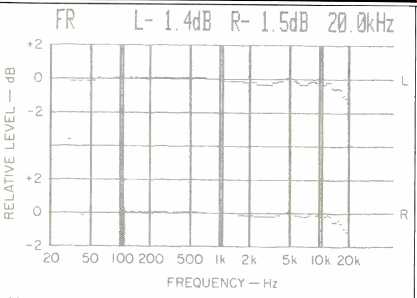
Fig. 1--Frequency response, left (top) and right channels.
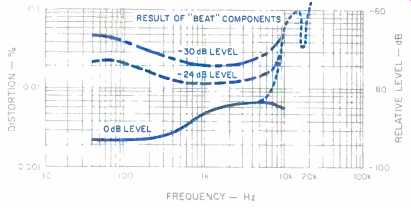
Fig. 2--Distortion vs. frequency (see text).
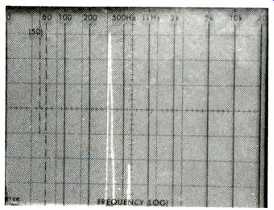
Fig. 3--Spectrum analysis from 0 Hz to 50 kHz shows 20-kHz signal (large
spike) and out-of-band beat component (small spike).
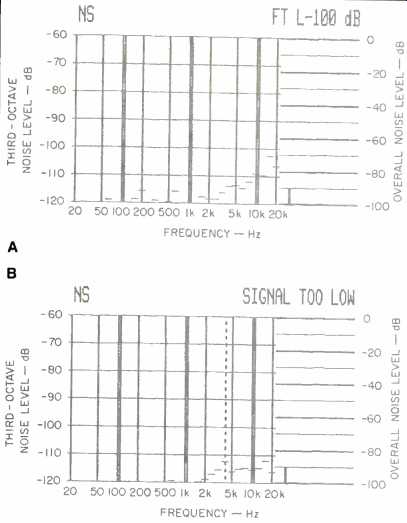
Fig.
4--S/N analysis, both unweighted (A) and A-weighted (B). A-weighted noise
was too low to be measured.
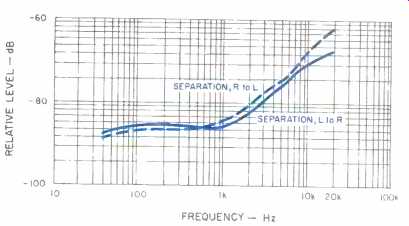
Fig. 5--Separation vs. frequency.
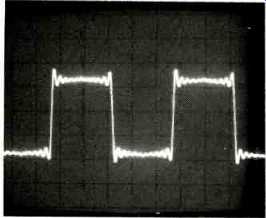
Fig. 6--Reproduction of a 1-kHz square wave.
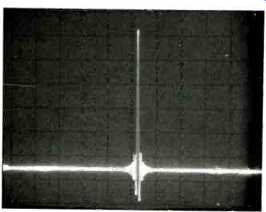
Fig. 7--Single-pulse test.
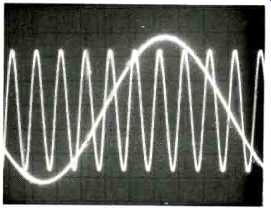
Fig. 8--Perfect phase linearity is exhibited in the phase-error test.
Use and Listening Tests
The Mission DAD-7000R, like the Philips (or Magnavox, if you prefer) players upon which its digital circuitry is based, is one of the finest-sounding CD players I have listened to.
Mission has taken the best of what Philips offers in Compact Disc technology and added magnificent audio-output stages whose low noise complements and enhances the sound quality of the circuitry preceding it. Add the extremely stable disc-tracking mechanism, the sturdy chassis and the simple control arrangement, and you have a CD player that will certainly appeal to the audio purists among us. I have no hesitation in accepting Mission's suggested price for this player. While the DAD-7000R lacks a few convenience features that other manufacturers incorporate in their top-of-the-line models, it more than makes up for those omissions by its clean, authoritative sound quality and its rugged construction. This player could well become one of the cult products whose value increases with time.
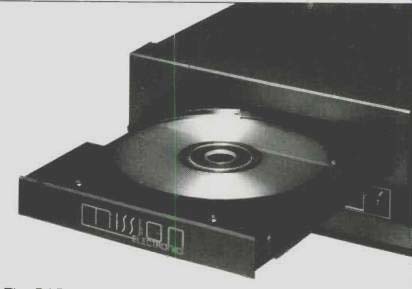
above: The DAD-7000R's sturdy-looking disc-loading drawer moves with an
impressive, if slow, solidity.
-Leonard Feldman
(Source: Audio magazine, Dec. 1985)
Also see:
Mission PCM-7000 Compact Disc Player (Aug. 1987)
Mod Squad Prism Compact Disc Player (Aug. 1988)
Micro Seiki CD-M1 Compact Disc Player (June 1984)
= = = =